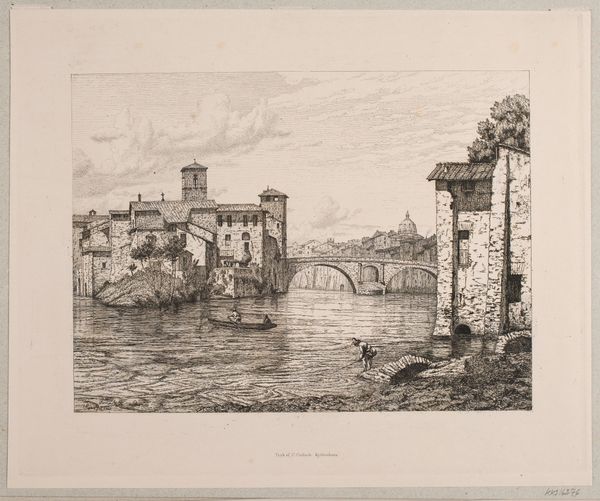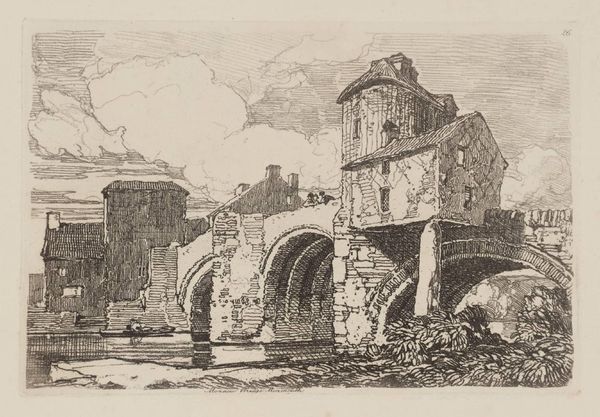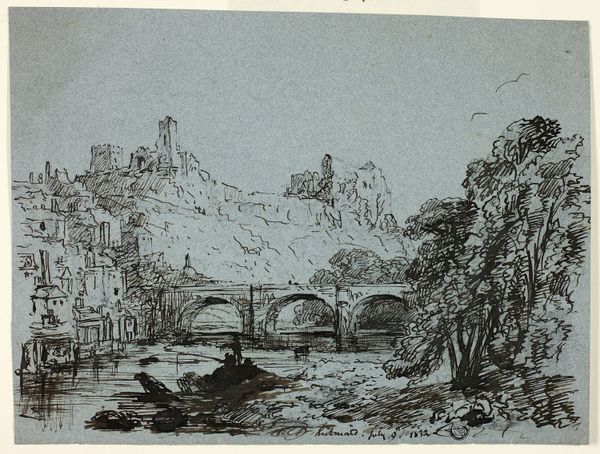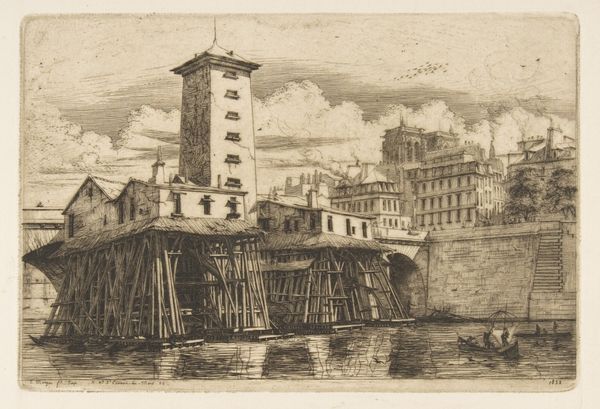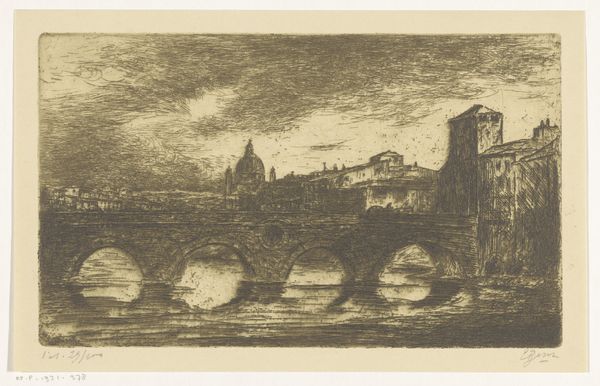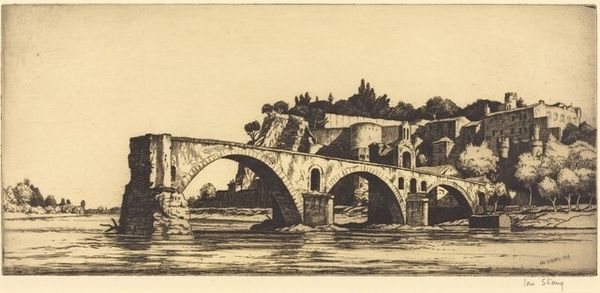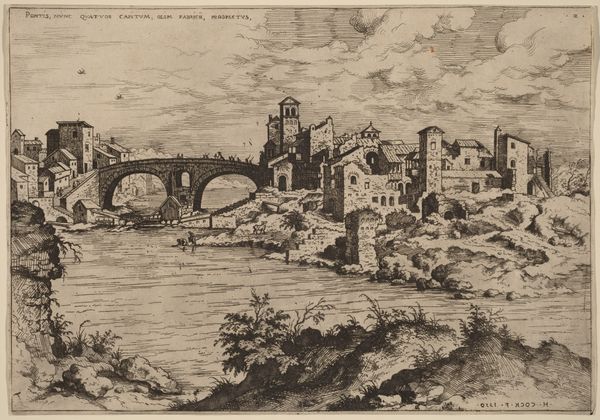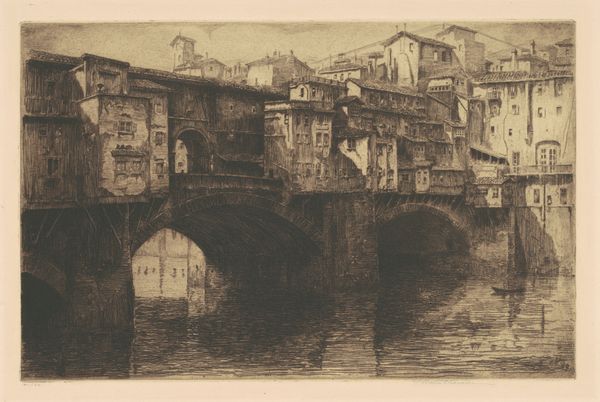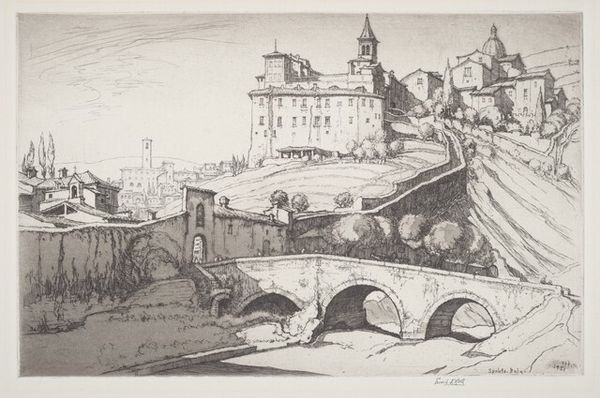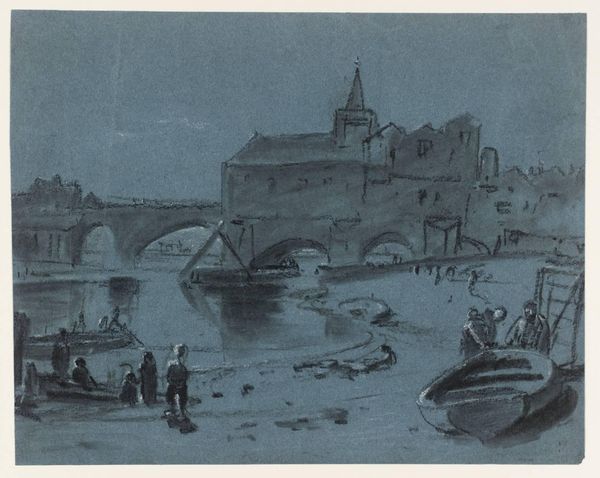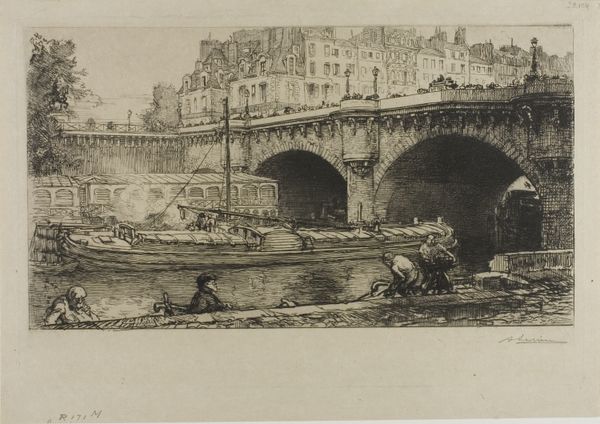
Dimensions: 220 mm (height) x 294 mm (width) (bladmaal)
Vilhelm Kyhn made this print of a scene on the Ponte Rotto in Rome. The printmaking process, etching, emphasizes line and detail. An etcher covers a metal plate with a waxy ground, then scratches an image into it with a needle before bathing the plate in acid. The acid bites into the exposed metal, creating recessed lines that hold ink. The plate is then wiped clean, inked, and pressed onto paper to transfer the image. Here, this process allows for intricate depictions of the stone buildings, the flowing water, and the figures engaged in daily life. The precision of the etched lines captures the texture of the stone and the reflections on the water, while the overall composition conveys a sense of place and atmosphere. The choice of printmaking speaks to Kyhn's interest in making art accessible and reproducible. Prints could be widely distributed, making art available to a broader audience. The labor-intensive process of etching is here put to the service of circulating images and ideas. Ultimately, it reminds us that art is always shaped by the materials and processes used to create it.
Comments
No comments
Be the first to comment and join the conversation on the ultimate creative platform.


